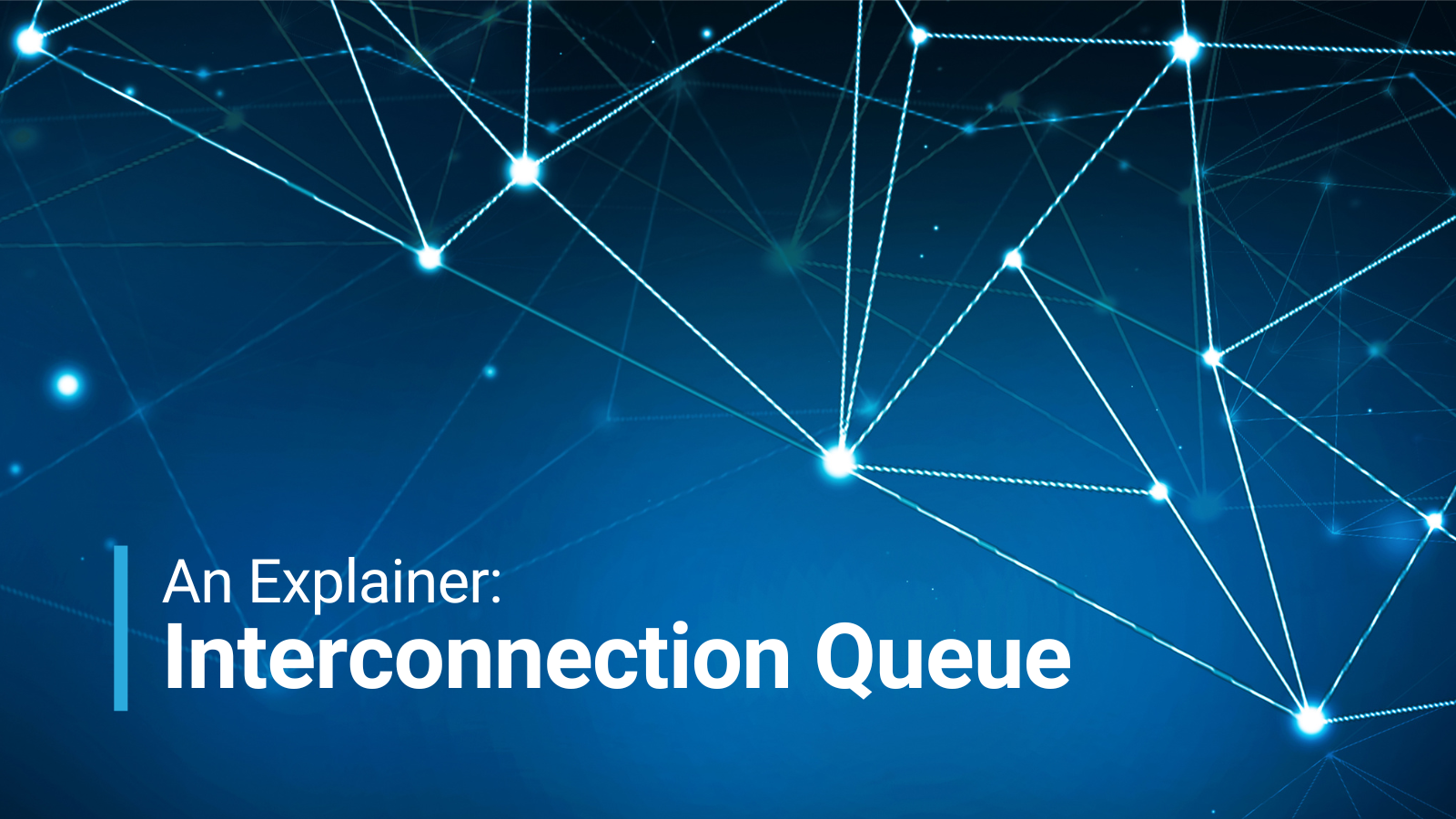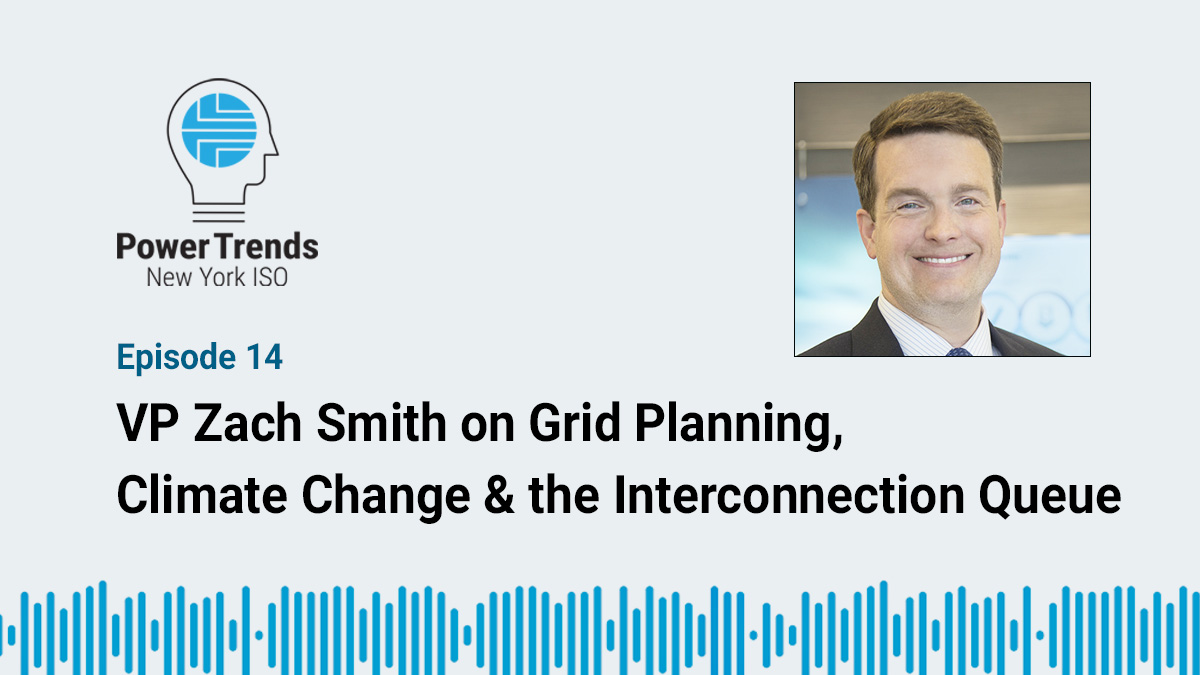How New Electric Resources Connect to the Grid: FAQ

The electric grid of the future is transforming before our eyes, with new technologies emerging that will forever change how we think about, manage, and use power.
In response to climate change policies at the state and federal level, developers are proposing an ever-growing portfolio of new, clean energy projects wishing to connect to the grid.
While this is underway, we also must maintain reliability of the system. New resources, including intermittent technologies like wind and solar, along with transmission upgrades, mean we must study the impacts and identify necessary investments. These are necessary to keep the grid reliable through this transformation, well in advance of when they are needed.
At the NYISO, managing the electric grid and keeping the system reliable are our mission. We are required under various federal, state, and regional rules to analyze and study changes in the grid to identify and solve reliability impacts on behalf of consumers.
We perform a rigorous analysis of all projects looking to connect to the transmission system, how these projects will impact the grid around where they wish to connect, as well as how the projects could impact one another. This is known as the “interconnection study process.” Projects seeking to connect to the grid are tracked in an “interconnection queue.”
Working closely with developers and affected utilities, our studies also identify necessary system upgrades and estimated costs to allow new resource developers to make informed investment decisions while protecting consumers from the financial burden of keeping the system reliable.
The 2019 Climate Leadership and Community Protection Act (CLCPA) calls for a 70% renewable energy system for 2030 and a zero-emissions grid by 2040. This has caused the volume and diversity of resources seeking to connect to the grid to increase dramatically in recent years, from a running queue of about 100 several years ago to about 450 today.
In anticipation of this influx, the NYISO worked with stakeholders to implement a comprehensive redesign of the interconnection study process in 2019, offering greater flexibility and expedited study options to developers. The NYISO continues to pursue reforms to the interconnection process, including several initiatives underway currently and planned for 2023.
The interconnection process serves a vital role in making sure that grid reliability is maintained. Transparent and robust rules for reliably connecting to the grid provide essential information for developers. Under the NYISO’s interconnection process, developers primarily incur the costs to connect to the grid, rather than consumers. This process provides two layers of protection:
- Supporting grid reliability, which is essential to the health, safety, and welfare of our society.
- Protection from the cost of uneconomic investment decisions that, under past models, were borne by consumers.
Read on for more information about the Interconnection Queue:
What exactly do we mean by “interconnection?”
“Interconnection” refers to the process of connecting new electric resources to the grid. The interconnection process involves engagement between developers, NYISO planning and operations teams, and impacted local utilities. Such projects are included in an Interconnection Queue, which is a list of transmission, generation, and load projects that have submitted an Interconnection Request to the NYISO.
Why does the NYISO study proposed projects seeking to connect to the grid?
Adding new generation, transmission, or large load centers to the transmission system is complex and is critical to maintaining reliability as these connections are made. The NYISO’s FERC-regulated Open Access Tariff details the interconnection requirements to deliver a process that is transparent, fair, and timely. The purpose of the process is to evaluate the impacts of proposed generation, transmission, or load and identify any system upgrades required to mitigate those impacts and satisfy reliability requirements.
As state policies across the nation seek to accelerate development of clean energy resources, FERC has observed that the volume of interconnection requests is creating backlogs and straining processes. According to FERC, at the end of 2021 there were more than 1,400 GW of generation and storage waiting in interconnection queues throughout the country, more than triple the number from just five years ago. FERC issued a Notice of Proposed Rulemaking as a step towards expediting processes. The NYISO is currently working with stakeholders, including market participants and state entities like NYSERDA and the Public Service Commission, to identify ways in which the process can be made more efficient.
What is the process for projects in the Interconnection Queue to be approved?
Large facilities (more than 20 MW) must undergo a series of studies that examine various aspects of how they would impact the grid, as well as costs of grid upgrades to accommodate the new resource. Depending on the size of the proposed project, the studies include:
- Optional Feasibility Study
- System Reliability Impact Study
- Facilities Study
Our interconnection study process identifies potential adverse reliability impacts associated with new supply and transmission projects. During this process, we identify necessary system upgrades and estimate the associated costs to allow investors to make more informed financial decisions. The process engages the NYISO, developers, and local utilities that are impacted by a project to discuss engineering and design details.
In addition, the studies are viewed by all NYISO stakeholders, including transmission owners, generators, state authorities and agencies, municipal utilities, large and small consumers, and environmental advocates.
Large projects that are the most advanced in the Interconnection Queue (those that have completed certain required milestones) join a Class Year of projects to determine their final interconnection costs and requirements.
What do we mean by “Class Year?”
A “Class Year” is a group of projects seeking to interconnect to the transmission system that have reached similar milestones in the interconnection process. These projects are studied to assess the cumulative impact they may have on the system and determine the costs to mitigate those impacts.
What is the difference between projects in our Interconnection Queue and the grid-scale solar, wind, and storage projects funded by NYSERDA?
The NYISO’s Interconnection Queue represents all grid-scale projects looking to connect onto New York’s bulk electrical system. Many of the projects in the queue are contracted to receive Renewable Energy Credit, or REC, payments through NYSERDA’s Renewable Portfolio Standard solicitations. NYSERDA’s REC award process is completely separate from the NYISO’s interconnection study process.
What have we done to make the interconnection process more efficient?
To facilitate growing investment in the renewable electric supply, in 2019 the NYISO worked with stakeholders to implement a comprehensive redesign of the interconnection study process. The redesign offers greater flexibility and expedited study options to developers seeking to obtain the necessary information to build projects connecting to the grid. The enhancements have proven effective in accelerating the process.
The improvements were applied for the first time to the Class Year 2019, the largest in the NYISO’s history. The vast majority of the Class Year 2019 projects were renewable generation and energy storage. Through a 2022 project initiative, the NYISO anticipates developing additional reforms to fine-tune coordination between the separate processes conducted by the NYISO and transmission owners.
How is the Interconnection Queue different from years past?
The CLCPA’s public policy requirements for renewable energy production and storage resources are driving a significant increase in wind, solar and storage projects seeking to connect to the grid.
Proposed wind and solar projects have very different reliability characteristics than fossil-fueled generation, due to their intermittent nature and dependence on the weather. Understanding how the grid will operate with these new kinds of resources is the focus of other NYISO planning initiatives, such as the reliability planning process’ Reliability Needs Assessment and Comprehensive Reliability Plan, and our System & Resource Outlook study.
How many resources are in the Interconnection Queue?
As of August, there were more than 400 active projects in the study stage in the queue.
What kind of resources are we seeing?
Most of the proposed resources currently in the Interconnection Queue are land-based wind resources, offshore wind resources, grid-scale solar, energy storage, and transmission upgrades that will help accommodate this new zero-emissions electricity.
The offshore wind projects require significant investment in generation and transmission technology.
Energy Storage Resources (ESRs) will play a huge role on the future grid by storing electricity when renewable output is abundant and distributing it when needed. With an increased reliance on resources dependent on weather, ESRs can help maintain reliability by continuing to fill power needs when the sun is not shining or there is no wind.
Learn More

Listen to our Power Trends Podcast Episode 14: Emission-Free Grid Planning, Climate Change and the Interconnection Queue.

